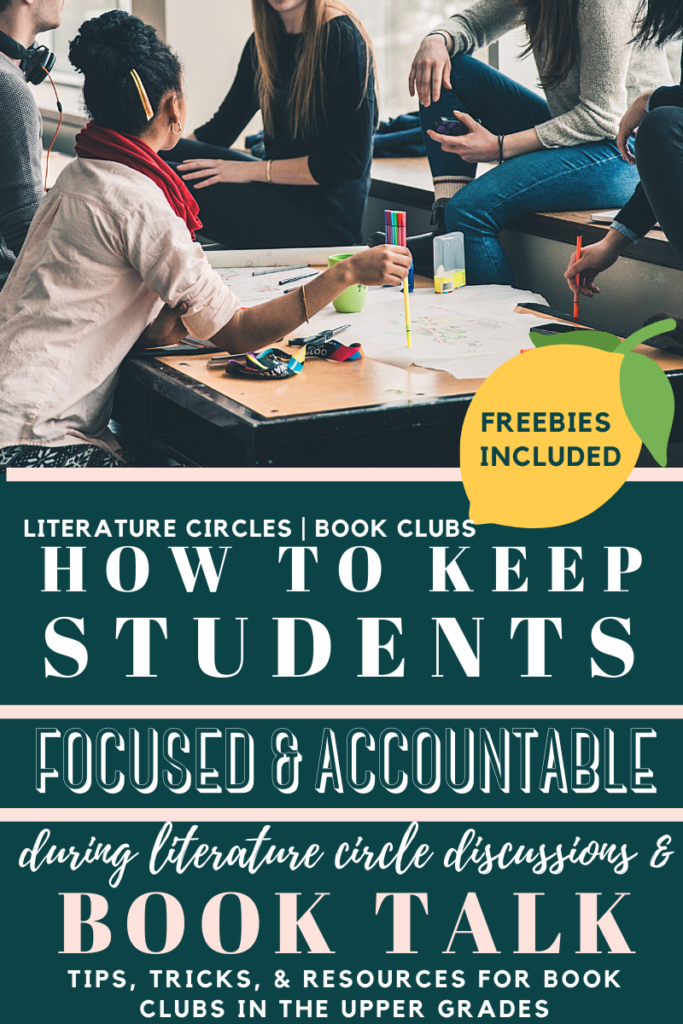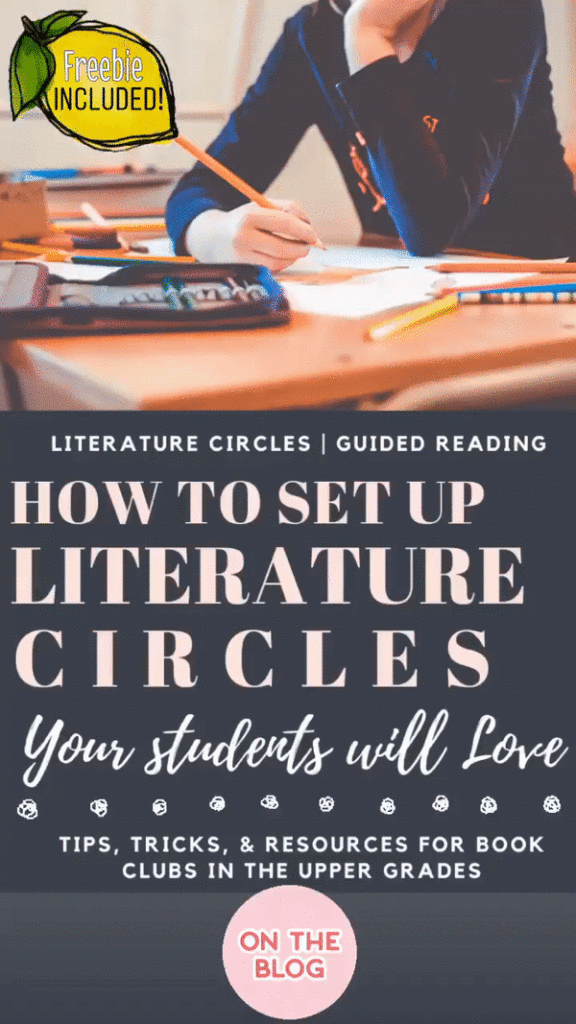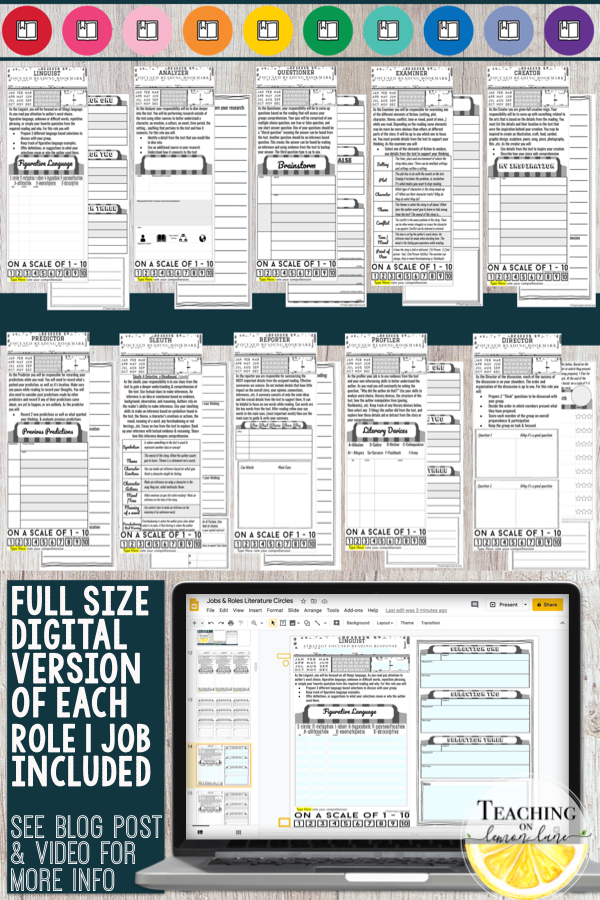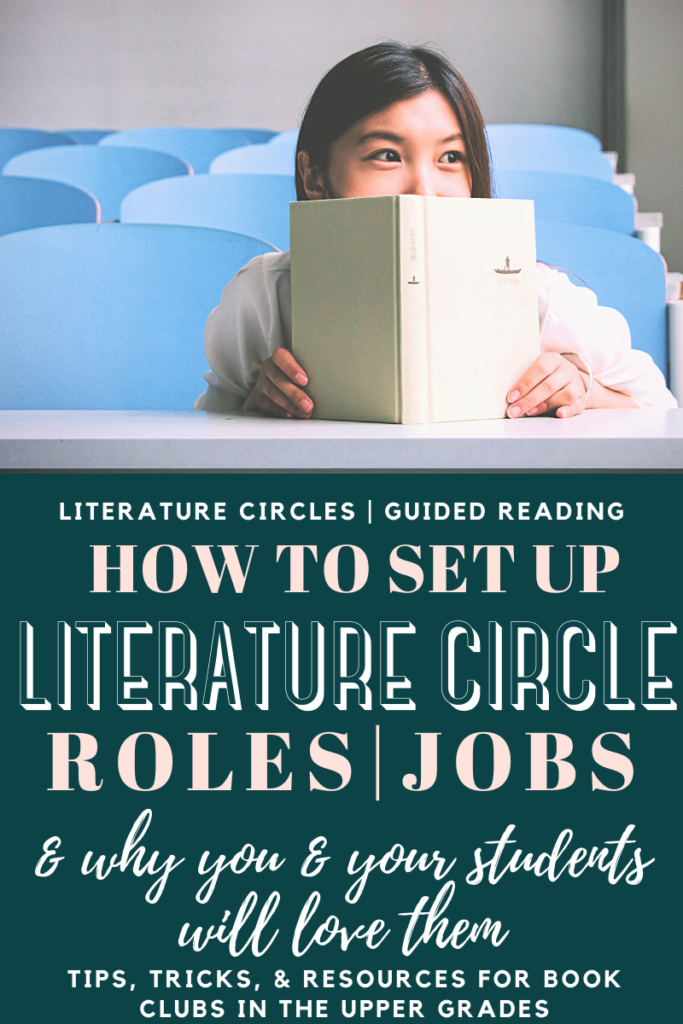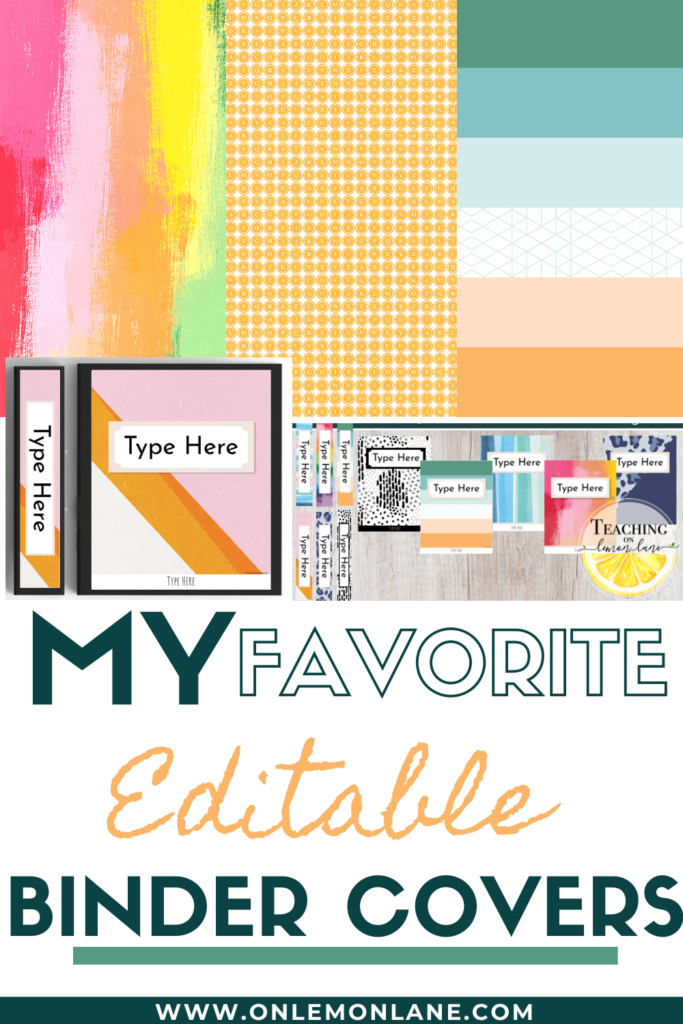
I LOVE Literature Circles. I wasn’t someone that always wanted to be a teacher growing up… However, when I did decide to pursue the teaching route, one of the main motivators was to be that “someone” that introduced a reluctant reader to the LOVE of reading. I suppose it’s because I was one of those readers growing up, that is until I discovered the MAGIC that reading can be. Literature Circles are all of those things in one to me. They allow students to have ownership and choice over what they are reading. They allow me to introduce students to titles or genres they wouldn’t have necessarily tried on their own. They also allow me to effectively introduce, model, and teach the strategies and skills students need to actively and independently do as they read if they want to experience the MAGIC.
As an educator looking into setting up Literature Circles I’m sure you are no novice, let alone are you ignorant to the idea that many well-intentioned literature circles simply don’t live up to the hype. Below I will share with you my tips to make sure your literature circles earn a well-deserved place in your classroom schedule as well as live up to the hype!
All of the products & resources highlighted below can be purchased in the EVERYTHING Bundle.
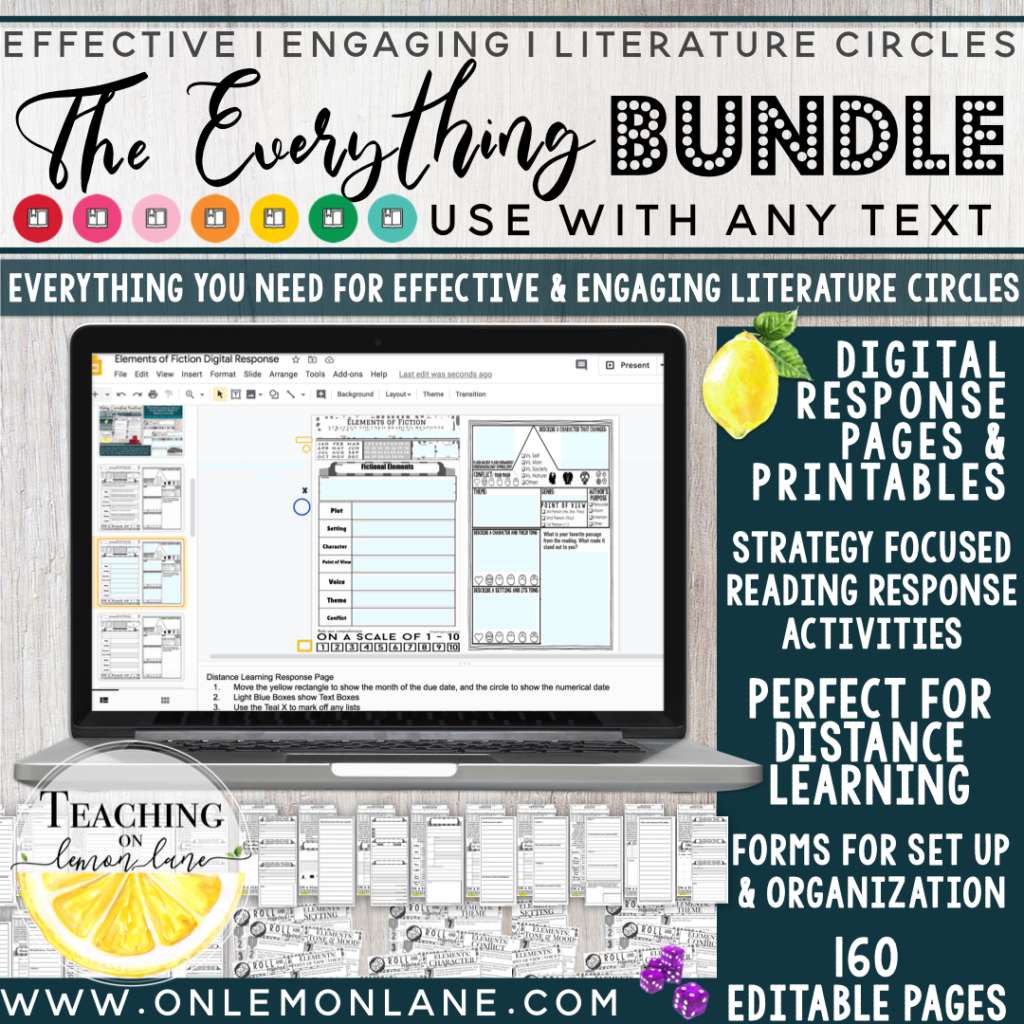
Click Here to Purchase the EVERYTHING BUNDLE on Teachers Pay Teachers
6 Steps to Setting Up Engaging and Effective Literature Circles
1. Organization is Key.
When it comes to setting up engaging and effective literature circles having a solid foundation from the beginning is crucial. For me, that meant a Literature Circle Binder. Before any reading took place, 99% of the groundwork was completed beforehand. I created forms that literally walk me through each step before implementing a Literature Circle Run.
-
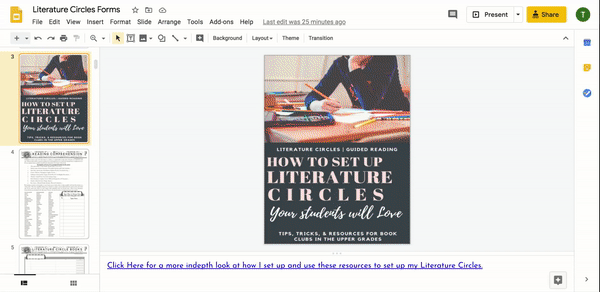 A brainstorming form to come up with Central Commonality amongst all the books I would introduce to my students.
A brainstorming form to come up with Central Commonality amongst all the books I would introduce to my students.- A form where students could be divided based on their reading level, making it easier for me to know which books to give as options to give them as a Literature Circle Choice.
- A form to breakdown and calculate weekly reading assignments.
- A form to keep track and rate which books worked well to remember to use again in the coming years
- A form to divide students into their actual Literature Circle Groups
- A form to keep track of students weekly reading assignments
- A form for students to rate their weekly group discussions
- …etc!
All of the forms that I use are editable through google slides, and include a digital version if you like to organize and plan initially! If interested in using these forms in your own classroom, see below for more information!
2. Model. Model. Model.
Often times I think Literature Circles flop because we put too much of the weight of its success on the student. Literature Circles are after all supposed to be student-led…? To me, there is a great difference in student-led, and assigning roles or activities to students without the proper scaffolding or modeling. Assigning a reading response, literature circle role to a student, or asking them to practice a skill or strategy without the proper scaffolding or support is like telling a non-swimmer what swimming looks like, what tools can them float, and then tossing them in the deep end without a life jacket and expecting them to swim. Students will only be able to perform at THEIR limited introductive level. To reach the standard you crave for your students, they must first experience it. This is why modeling is KEY, when it comes to Literature Circles.
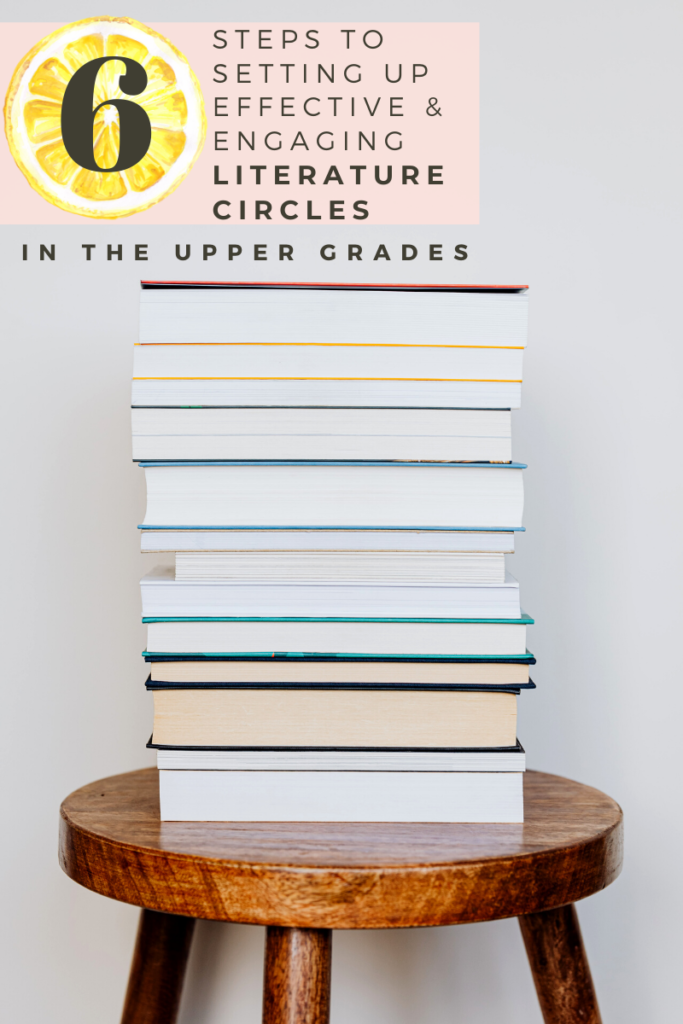 I begin the start of each year with a whole-class novel. This allows me to model my expectations for Literature Circles, as well as introduce the skills, strategies, and roles students will be expected to do independently. While teaching 5th grade, I liked to start with grade-level novels like Lemonade War, or Frindle. Essentially you want a quick read, that can be divided into lessons, that will allow for meaningful group discussion based on the strategies and skills you will be modeling. I would start by introducing and modeling the Active Reading Strategies.
I begin the start of each year with a whole-class novel. This allows me to model my expectations for Literature Circles, as well as introduce the skills, strategies, and roles students will be expected to do independently. While teaching 5th grade, I liked to start with grade-level novels like Lemonade War, or Frindle. Essentially you want a quick read, that can be divided into lessons, that will allow for meaningful group discussion based on the strategies and skills you will be modeling. I would start by introducing and modeling the Active Reading Strategies.
If you don’t introduce the skills, strategies or roles you will be expecting students to do independently through a Whole-Class Novel, consider introducing them during a weekly lesson instead. You can use a whole-class novel with this type of weekly lesson, digital passages, or even picture books to model a weekly lesson! (Don’t check out Middle School|Secondary teachers… There are LOADS of picture books dripping with depth and complexity that are also GREAT options for integrating other subject matters) ***The only thing to keep in mind with weekly lessons is that if you are wanting to do Literature Circle Roles, students will all be completing the SAME role after a weekly lesson unit all the roles have been covered.
To, With, By is the simple yet effective model I used for introducing skills, strategies, and roles. Begin by modeling the expectation, standard or skill clearly and explicitly. Do all of your thinking out loud, this introduction is done TO the students. Next, move to the WITH part of the introduction. Do the same strategy, skill, or standard WITH your students. Here answering, and asking questions and stating any clarifications. At the end of the WITH students should be confident moving into the BY section of the lesson. If doing a whole Class Novel, let them read the next chapter and apply the lesson BY themselves. If doing a mini-lesson students will do the literature circle weekly reading BY themselves and apply the modeled skill.
***If teaching Digitally, these models work GREAT. Zoom and Google Meet are wonderful free resources for video conferencing with your class, you can even record your lessons and post them to Google Classroom for students unable to attend a live conference! All of the Literature Circle Resouces I use come in a digital version as well! I’ll include more information below!
3. Keep things Strategy | Skill Focused
This goes hand in hand with modeling each skill, strategy, or role you expect students to do independently. I’ve heard the argument of not isolating skills or strategies during literature circles whether that be through Student roles, or reading responses because educators want students to apply ALL of the skills while reading… To this, I say, “ABSOLUTELY.” The whole point of introducing skills and strategies in an isolated way is for students to better understand and experience the skill. Back to my swimming analogy, it’s tough to expect a student to know the difference between an inference and a prediction when they haven’t had adequate exposure and practice with both in a way that they know what one is and what it is not. THE END GOAL, the entire point of keeping things strategy based is that they will begin to do ALL of the things we’ve introduced to them in an isolated matter. Because it’s when you’re doing ALL of the things that MAGIC happens.
I’ve created Strategy|Skill Focused resources, bookmarks, digital reading response activities for students to complete during their weekly reading assignments. They are available in the following strategies/elements.
 Elements of Fiction
Elements of Fiction
Click Here to Purchase
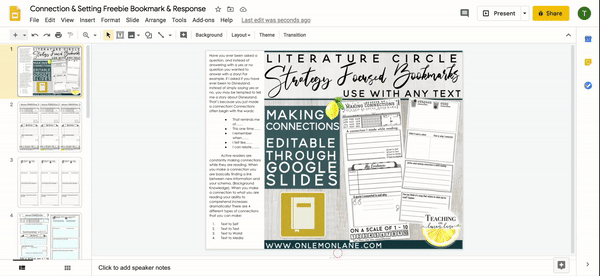 Active Reading Strategies
Active Reading Strategies
Click Here to Purchase
I used these as a weekly assignment with my literature circle groups. If doing mini-lessons to introduce the skill or strategy of the week, the lesson would be based on the student response|bookmark that would be assigned. Students would then receive their weekly reading assignment and new bookmark or digital response page (Printable version included). Students would have the week to complete their reading and the strategy focused assignment. At the end of the week, students would meet in their groups and use the Roll & Respond Comprehension Questions based on the SAME strategy they focused on that week to guide their group’s discussion! Learn more about the Strategy Focused Roll and Respond pages in the next step!
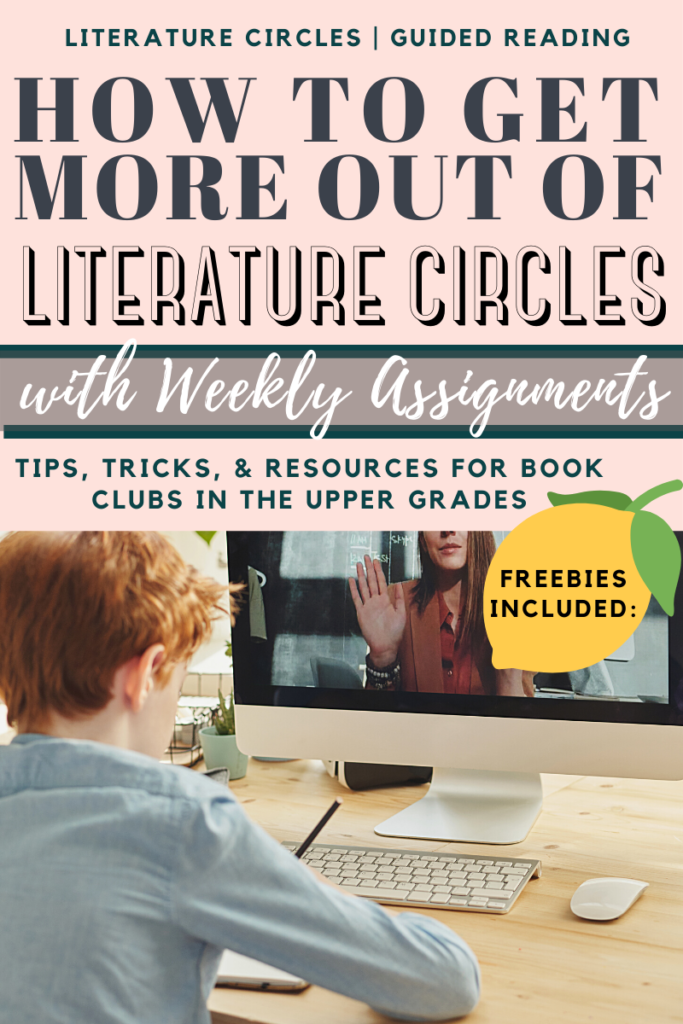 To get a more in-depth look at how I keep my Literature Circles Strategy and Skill focused, check out this Blog Post! FREEBIE INCLUDED!
To get a more in-depth look at how I keep my Literature Circles Strategy and Skill focused, check out this Blog Post! FREEBIE INCLUDED!
4.  Hold Students Accountable in Group Discussions
Hold Students Accountable in Group Discussions
Allowing students the opportunity to discuss a book they are reading with their peers is motivating and for lack of a better word… powerful. When done correctly with the right supports, the discussion, participation, and passion found in a peer-led book talk will always outweigh a class-discussion led by the teacher. There is trust necessary between teacher and students in order to allow for this type of flexibility and freedom to happen in the classroom.
I quickly learned that simply telling my students that they had 10 minutes to talk about the book they were reading with their group despite my clearly stated expectations was ineffective, and often led to chaos and disappointment on my end. Depending on your class or the group of students asked, this won’t always be the case. However, I found that by adding supports, restraints, and accountability to their discussion greatly increased the overall effectiveness of the group’s discussion.
As mentioned in Step 4, I would use Strategy Focused Roll and Respond Comprehension Questions during a portion of each group’s discussion. These are wonderful because they add a little chance/fun to the discussion, 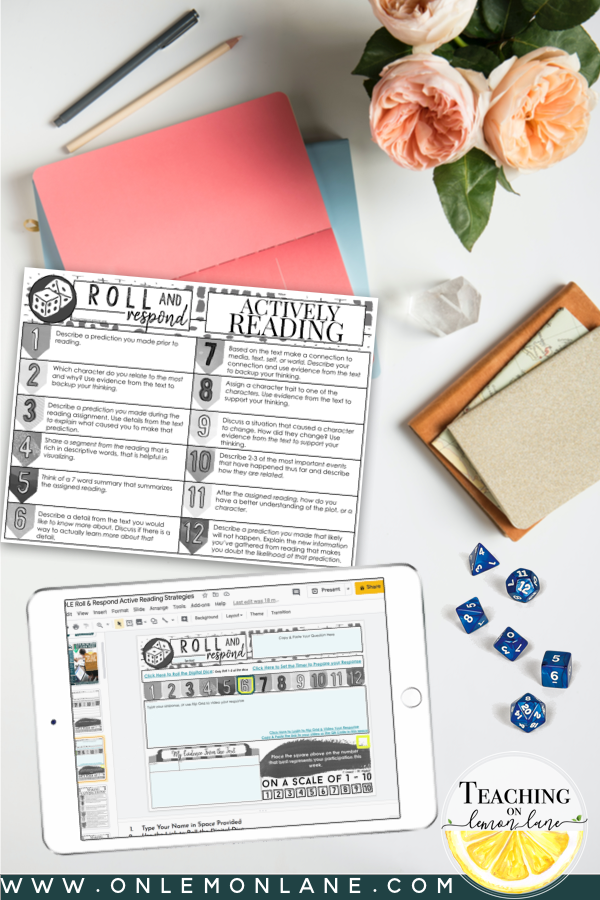 all while making sure students are talking about the things I want them to talk about that week. Every Bookmark/Student Digital Response has an accompanying Roll & Respond sheet based on the same strategy. If this interests you make sure to check out the blog post above. There I more clearly explain my procedure and expectation for evidence-based student answers. As well as how you can use a digital dice roll if implementing is a distance learning classroom!
all while making sure students are talking about the things I want them to talk about that week. Every Bookmark/Student Digital Response has an accompanying Roll & Respond sheet based on the same strategy. If this interests you make sure to check out the blog post above. There I more clearly explain my procedure and expectation for evidence-based student answers. As well as how you can use a digital dice roll if implementing is a distance learning classroom!
At the end of each discussion, collectively as a group, students would rate their group’s discussion by having one person hold up their hand showing a 1-5. I am a big proponent of not grading everything, but not letting your students know it. As far as they were concerned I would take down their group score and it would go in the grade book. In reality, this wasn’t always the case. I would, however, reward any group that honestly felt they met a 5. Rewards could be they leave an extra 5 minutes early for recess, a small treat…etc. This tiny motivation was a huge proponent and motivator in group discussions and creating accountability. Another way I held students accountable during literature circle discussions was to use group accountability sheets, (One is included in the Literature Circle Form & Organization Product.) As well as when roles were implemented during literature circles, it was the director’s responsibility to score each group member based on preparation and participation. Whatever you do, have some form of accountability during student-led discussions.
5. Establish Meaningful & Deliberate Roles
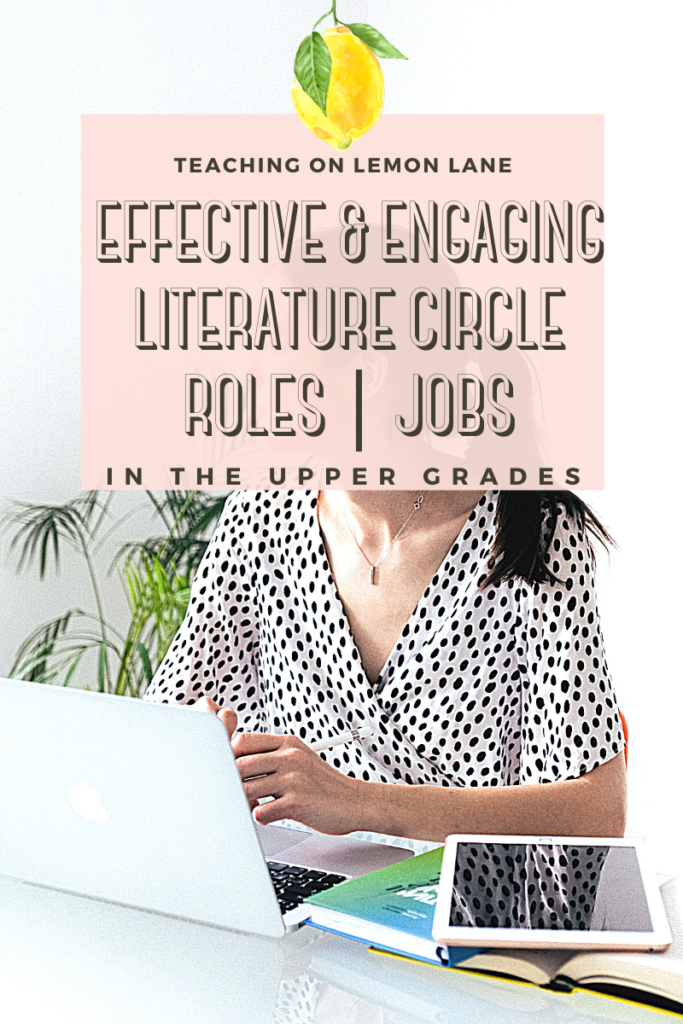
It’s not enough to assign cutey roles|jobs to each student and hope that they will rise to the occasion and their discussions will all of the sudden have the depth you so desperately want them to experience. As mentioned before, I firmly believe that nothing independent should be assigned to a student without proper modeling.
If you are looking to establish roles in your literature circles, I highly suggest beginning with a short whole-class novel or take the time to model each role with your class before assigning then in a literature circle run. This will allow you and the class to practice first-hand exactly what you will be asking them to do, (on display to their peers…)
When assigning roles to your students make sure that they are both age and curriculum appropriate. The literature circle roles created with 3rd graders in mind should not be the same roles you use with your 6th graders or secondary students. Make sure the tasks associated with the roles are aligned with the curriculum and standards you are expected to teach them.
I’m all about choice when it comes to literature circles. (Just check out the Bonus Tip!) Student choice creates motivation and accountability that can’t be imitated. I use this same approach when it comes to assigning literature circle roles. Technically, the students have already been introduced to and experienced each role that I wanted them to during the whole-class novel when each role was modeled…right?! Also, by allowing students to choose which role they will complete each week FREES me of having to keep track and come up with a rotation of roles schedule for each group! The only requirements I have are:
wanted them to during the whole-class novel when each role was modeled…right?! Also, by allowing students to choose which role they will complete each week FREES me of having to keep track and come up with a rotation of roles schedule for each group! The only requirements I have are:
-
- Only one student, per role, per reading assignment (No two the same)
- No repeats during a literature circle run
I created Literature Circle Role Bookmarks and Role Digital Response Sheets for the following:
All are completely editable through Google allowing you to customize each activity to your classroom, whether that be simplifying the text or adding more depth and complexity. These are great options for Upper Elementary, Middle School, and even Secondary students. Added Rigor comes from the assigned reading. Each role focuses on different strategies and elements like literary devices, figurative language, elements of fiction, and the active reading strategies.
For a more in-depth look at how I implement Literature Circle Roles, Check out this Blog Post!
6. Be Flexible, Use Resources Adaptable to Digital Learning
With the ever-changing, quickly adapting classroom model I highly suggest using a product that can accommodate both digital and in-class learning. There is great value in establishing familiarity with what you will be assigning to students and what they will be expected to do. Keeping that common thread whether students are in class with you or in their own home prevents a lot of confusion and anxiety. This simple step also simplifies your workload 10-fold. I will link the products I created below. Every Literature Circle product includes the printable version as well as a digital version that can be used in a distance-learning classroom. By using the same materials in the classroom as you do during distance learning, students know what to expect no matter what comes, thus you simplify your planning and decrease anxiety for both you and your students. Below are some of my favorite resources for implementing Litearture Circles in a Distance Learning setting:
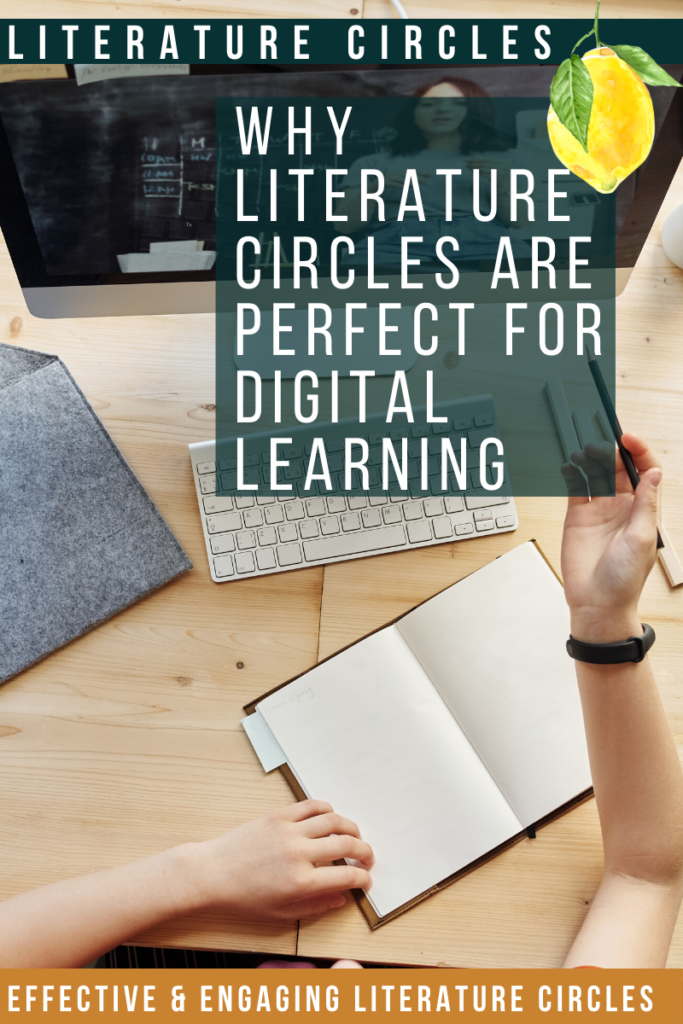 Zoom, Google Meet, and Flip Grid are great FREE resources that make it easy to implement Literature Circles Digitally.
Zoom, Google Meet, and Flip Grid are great FREE resources that make it easy to implement Literature Circles Digitally.
- Benefits to Zoom: Zoom is a video conferencing tool that allows you to meet with your students in real-time. Zoom offers breakout rooms which are PERFECT for your Literature Circle Groups to meet and discuss the weekly reading. This “live” time is also a nice way to partially meet the social needs of your students. Essentially you would begin the conference call as a whole class, and then students would divide into their breakout rooms to discuss their roles and the reading as a group. Click here for more information on breakout rooms.
- Benefits to Google Meet: Google Meet is another video conferencing tool that is wonderful for distance learning. Because it’s through Google the integrations between Google Classroom and Google Meet are pretty seamless. If using Google Meet, you will have to separate “Google Meets” for each group to use, instead of meeting as a whole class first and then breaking off while staying on the same call. Head here for more information on Google Meet.
- Benefits to Flip Grid: Flip Grid is a video response tool. Instead of meeting live, during a conference call, students would instead have the option of creating a video of themselves responding to the reading and posting it to their group’s discussion board. From there, students can interact, like, and comment on each other’s Flip Grid Videos. This is a great alternative if students are unable to attend a scheduled conference call. This blog post offers more information.
- Go COMPLETELY Digital with EBooks and Digital Passages. I’ll be the first to admit I’m all for getting a real, old-fashioned, concrete book in your student’s hand. However, I’ll also be the first to admit that it may not be an option at times. With all the resources available to teachers in the form of Ebooks, don’t stress for one second, you have thousands of quality E-books and classics at your disposal many of them are even Free. Check out this list for more information!
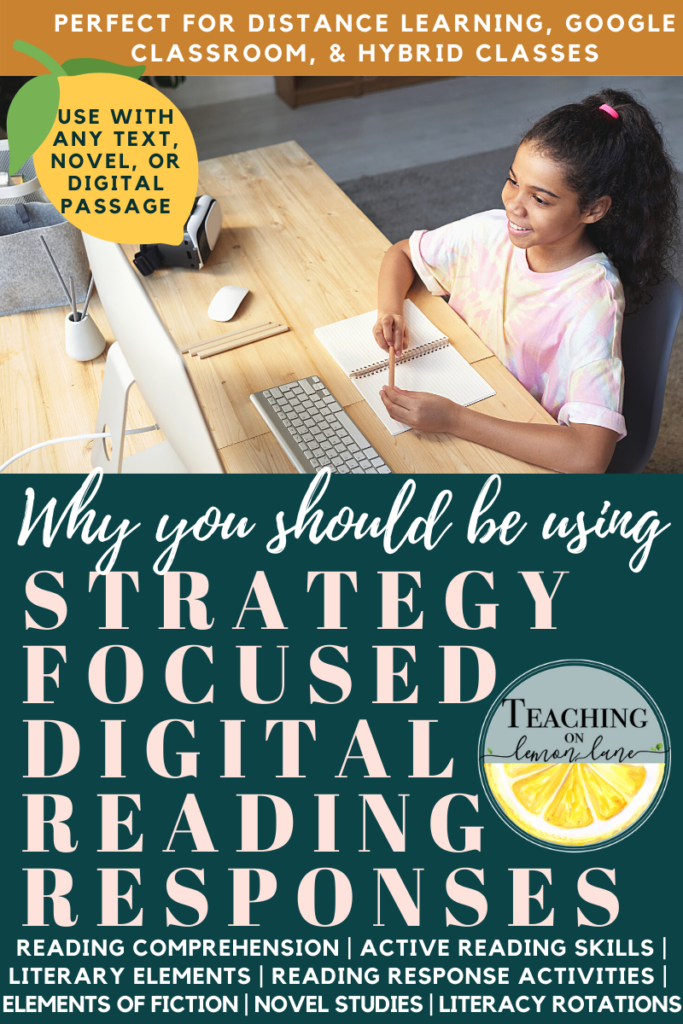
For a more in-depth look at using Digital Resources in the classroom, Check out this Blog Post!
BONUS TIP: Build Your Literature Circles on Student Choice, Supported by Independent Reading Levels
Literature Circles to me are all about instilling a love of reading while fostering student choice and accountability in the classroom. Allowing students to have a choice in their own learning is power. Allowing students to discuss something they had a choice in with their peers is motivating.
Many people hold different philosophies when it comes to literature circles as to how much choice should be given in the matter. Do you abandon all structure and let your highest reader pick a book level below where they should be reading. Do you throw reason in the wind and let your lowest reader join book levels above where they are able to read independently? You will find a wide range of opinions all with strong reasoning on every part of the scale, myself, however, I would say I’m a moderate.
Because of the materials and resources, I use alongside my literature circle groups I feel confident that rigor is provided even if a student is in a literature circle group a few levels below my readers. I also see value in having that higher student in a book group leveled below them because of the depth and insight they can bring to the weekly discussion. It’s all about weighing out the pros and the cons, the biggest pro you can have in your corner is a student excited about a book and passionate about wanting to be included in that group.
BENEFITS to setting Up Literature Circles in your classroom
- Introduce students to wide variety of titles, genres, and themes.
- Literature Circles can easily adapt & seamlessly adapt to digital or distance learning.
- Your planning is simplified 10 fold. Prepare a weekly strategy focused mini-lesson, let students apply what they are learning as they read.
- You can use your Literature Circle plans, book choices and breakdowns for years to come.
- I keep all of these filled out forms in my Literature Circle Binder and would look back on them OFTEN. Even while at home I keep these notes for another day.
- Students are able to independently practice the skills and strategies being covered in Guided Reading and the mini-lessons.
- Student choice leads to greater accountability and motivation
- Peer Discussion creates motivation, “Literature circles give students the opportunity to talk about books with their peers. Through these conversations, they build community, learn critical speaking and listening behaviors, deepen their understanding of books, and…recognize that reading is fun!”
If you’re interested in trying the products I created for Literature Circles in your own classroom make sure to check out the EVERYTHING Bundle. This Bundle includes EVERYTHING introduced in this post as well as EVERYTHING you will need to set up Effective and Engaging Literature Circles in your Classroom. Save BIG with this Bundle. If you are interested in purchasing items separately, check out the related blog posts for individual product listings.
Click Here to SAVE BIG and Purchase the EVERYTHING Bundle on Teachers Pay Teachers
Click Here to Purchase
Full Video Preview Below of What’s Included in the EVERYTHING Bundle!
Related Posts:
Stay in the loop, let’s connect!

To stay up-to-date on new blog posts, freebies, exclusive promo codes, and sales… Join the Teaching on Lemon Lane Community! Pick any or all of the following to stay in the loop of all things Teaching on Lemon Lane.
- Follow @TeachingonlemonLane on Instagram
- Like Teaching on Lemon Lane on Facebook
- Join our exclusive Teaching on Lemon Lane Facebook Group
- Sign-Up for our Monthly Newsletter: No Spam, only make your life easy-peasy, lemon-squeezy goodness… Promise.
If you enjoyed this PLEASE SHARE! Sharing on Pinterest, Facebook, or tagging on Instagram is a simple, yet wonderful way to support the efforts of Teaching on Lemon Lane!

